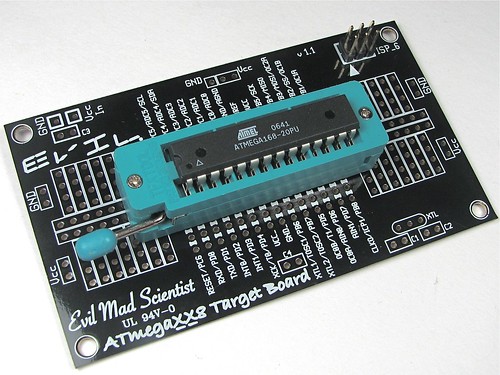
A quick, handy, geeky, and seriously inexpensive perpetual calendar for your desk.
Got 12 cents and a scrap of cardboard? You’re good to go!




A new application to draw your own snowflakes and save them in PDF format. Clean, cross-platform, open-source, and able to generate closed-polygon vector shape output. Oh yeah.
|
Last week we released an Arduino environment library for the Meggy Jr RGB. The code is an open source project here, and the downloadable package comes several example programs, ranging from very simple to moderately complex. (One of the examples is a new game called Froggy Jr, where you help your a little round green frog cross the street and then a river.)
Today, to make it all a bit more useful, we are releasing the Meggy Jr RGB Programing guide, which you can download Here (600 kB PDF file). |
I am this many.
Have you ever heard of the unary number system, i.e., base-1 numerals? That’s the formal designation of tally marks– a means of representing a number symbolically by using symbols, where the number represented is equal to the number of symbols. While easy to grasp, it’s also a rather inefficient system, so we don’t find too many uses of them in modern life. One of the places that we do (almost) always use the unary system is on birthday cakes, where a birthday cake has one candle per year. This is fine for small numbers, but positioning, lighting and blowing out candles becomes impractical past a certain point.
Here’s a better way: A binary birthday candle. It consists of a single candle with seven wicks, where the wicks that are lit represent the birthday individual’s age in binary. This single candle design works flawlessly to represent any age from 1 to 127, never requiring anyone below the age of 127 to blow out more than a mere six candles at a time.
Continue reading Binary Birthday
Meggy Jr RGB is a new kit that we designed as a platform to develop handheld pixel games. It’s based around a fully addressable 8×8 RGB LED matrix display, and features six big fat buttons for comfy game play. The kit is driven by an ATmega168 microcontroller, and you can write your own games or otherwise control it through the Arduino development environment. Meggy Jr is fast, programmable, open source and hackable. And fun.
Continue reading Meggy Jr RGB
We’ve just released a new version of our super-handy business card sized target board for programming 28-pin AVR microcontrollers like the ATmega168 and ATmega328. These are just the thing for programming these chips through an ISP programmer like the USBtinyISP.
We use these for a lot of our simple microcontroller projects; Tennis For Two and the Lissajous POV come to mind. The new version has basically the same design but adds some extra prototyping area and makes the holes big enough to accept a ZIF socket:

Like the original version of this target board, this circuit board is a fully open source hardware design. For much more information– including the detailed design files– please see the update that we’ve added to the end of our original article about this project.
Jack-o’-Lanterns are supposed to be scary, right? So here is our new one: it’s a mini pumpkin with a (tiny) scrolling LED stock ticker. Reprogrammable so you can update it every day with gloomy news from Wall Street.
Continue reading Scariest Jack-o’-Lantern of 2008
Simple Solar Circuits:
How to get started adding solar power to your small electronics projects. Use the sun to power small solar and battery powered night lights, garden lights, and decorations for halloween.
Continue reading Simple Solar Circuits